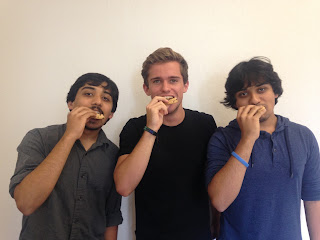Alex: It was good being in San Francisco. Thanks again to our sponsors Thermo Fisher and the organizers of the meeting to make this happen. What are you up to?
Birgitt: As I pointed out at the meeting, I am planning to write about your genetic make-up and potential factors that might predispose you to Parkinson's disease. But today I will share with you how to make neurons from your skin-derived stem cells.
Alex: Would it be possible to transplant these neurons back into my brain and replace the neurons that are gone?
Birgitt: In principle, yes, that is an approach many research laboratories are working on. But to make cells safe for human use, they have to be handled under special good manufacturing practices, which means for example that cells cannot come in contact with any animal products. Your cells have been grown for research purposes only.
Alex: Got it, makes sense.
 |
| Timeline of neuronal differentiation |
Birgitt: Here is a timeline that shows the neuronal differentiation from pluripotent stem cells over an intermediate stage of neural stem or progenitor cells, which take about 10-12 days and then 20-30 days for maturation into neurons.
Alex: I am quite amazed that this is possible and the potential for drug discovery these cell cultures have. I really hope this will lead to faster discoveries and validation of novel compounds in the future.
Birgitt: That is exactly the concept and idea behind developing these models. Here you can see how your neurons look after about 30 days differentiation. The blue dots are cell bodies and in green you see the processes of the neurons.
 |
| Differentiated neurons after 30 day in culture |
Alex: Incredible and really beautiful. Are these really my neurons? I wonder what they are thinking about.
Birgitt: I am sure they want cure for Parkinson's disease.
Alex: And so do I!












